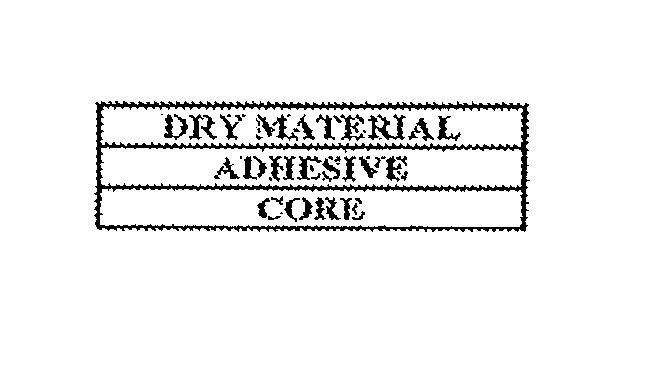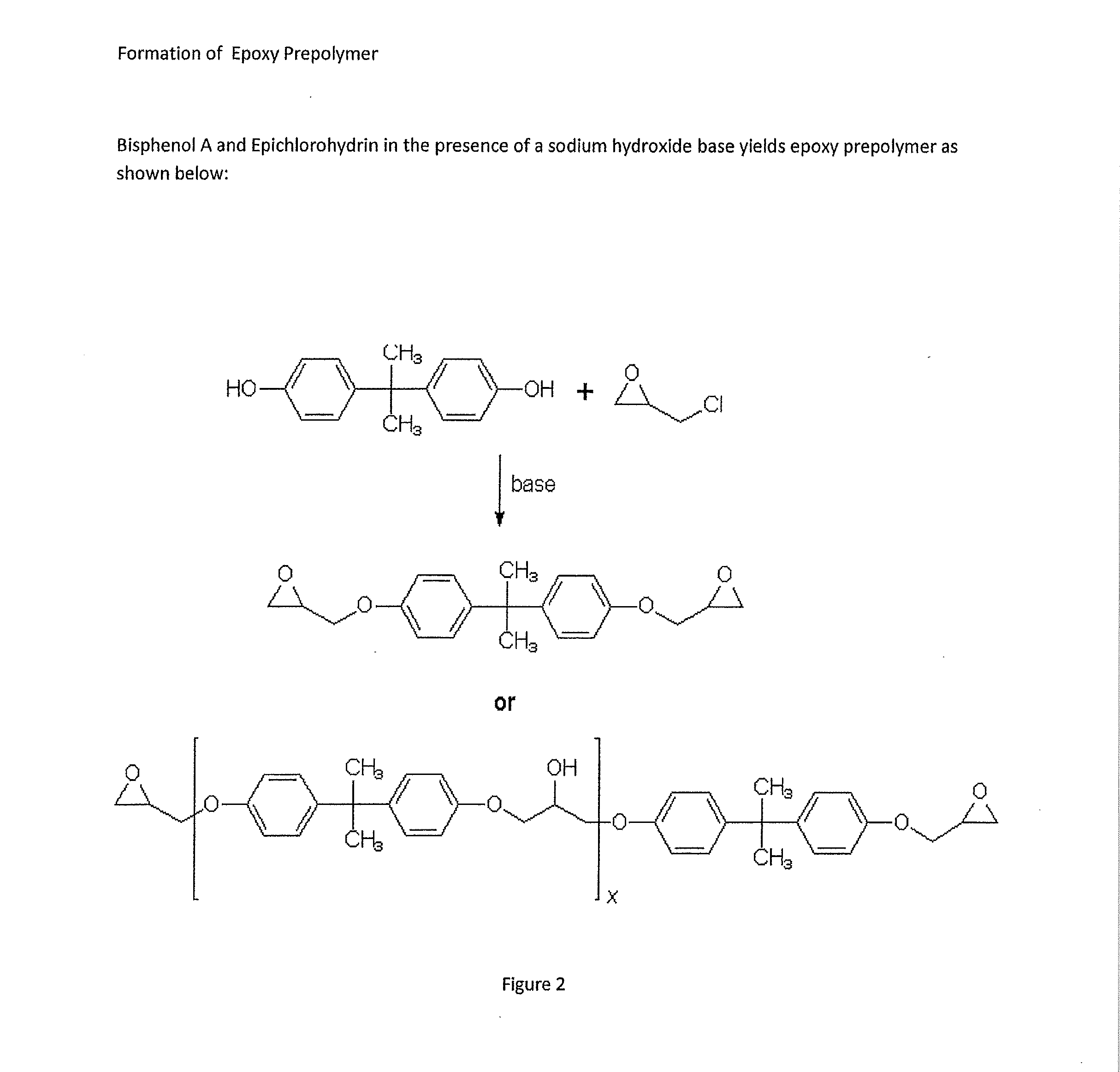Vacuum infusion adhesive and methods related thereto
a vacuum infusion and adhesive technology, applied in the field of adhesives, can solve the problems of weakening the interface, affecting the overall integrity of the cured structure, negatively affecting the successful formation of strong polar bonds, etc., and achieve the effect of avoiding the creation of weakening the adhesive interface and enabling seamless polymerization
- Summary
- Abstract
- Description
- Claims
- Application Information
AI Technical Summary
Benefits of technology
Problems solved by technology
Method used
Image
Examples
example
Example 1
Shear Stress Testing Using No Adhesive, the Inventive Adhesive, and a Commercial Adhesive
[0068]In order to test the efficacy of the epoxy adhesive, laminate samples were prepared and analyzed following a procedure similar to ASTM D 2334. Fiberglass laminate layers were prepared: first, with no adhesive, second, with the epoxy adhesive, and third, with representative multi-purpose aerosol adhesive, 3M SUPER 77®. Ten samples were tested for each variation. Maximum shear stress (MPa) repeatedly confirmed the unexpected benefits of the epoxy adhesive, as compared to the representative traditional, multi-purpose adhesive. Sample data and measured results are presented in FIG. 5, with graphical representation in FIG. 6. With strength recovery double that of a traditional adhesive, the performance of the adhesive, with 99% strength recovery, is unexpectedly synergistic and improved for use in epoxy laminate applications relative to the performance of a traditional adhesive, with a...
PUM
| Property | Measurement | Unit |
|---|---|---|
| viscosity | aaaaa | aaaaa |
| viscosity | aaaaa | aaaaa |
| wt % | aaaaa | aaaaa |
Abstract
Description
Claims
Application Information
 Login to View More
Login to View More - R&D
- Intellectual Property
- Life Sciences
- Materials
- Tech Scout
- Unparalleled Data Quality
- Higher Quality Content
- 60% Fewer Hallucinations
Browse by: Latest US Patents, China's latest patents, Technical Efficacy Thesaurus, Application Domain, Technology Topic, Popular Technical Reports.
© 2025 PatSnap. All rights reserved.Legal|Privacy policy|Modern Slavery Act Transparency Statement|Sitemap|About US| Contact US: help@patsnap.com



